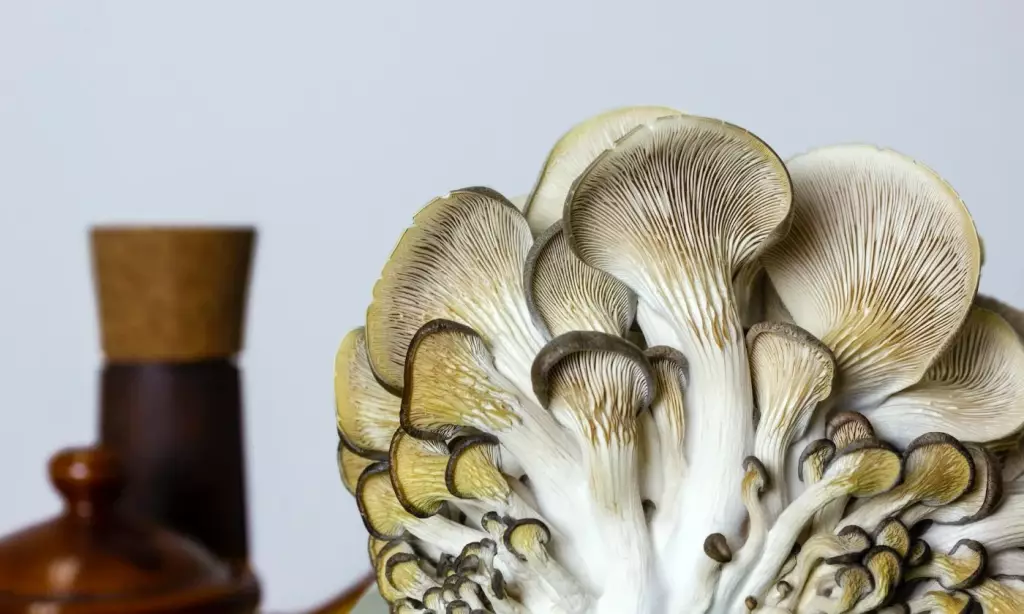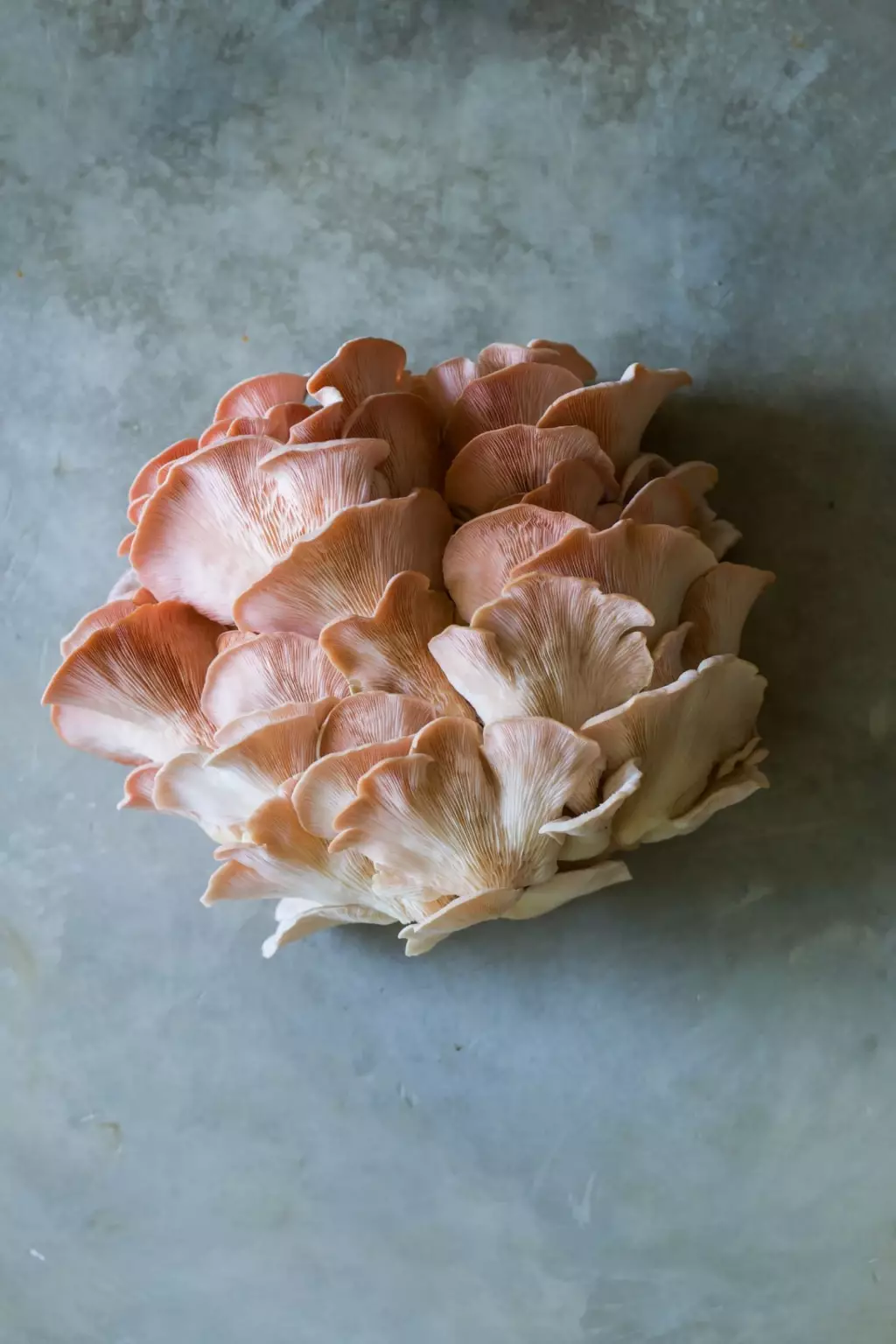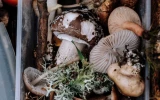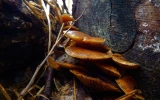The Oyster Mushroom Growth Stages Explained (Timeline)
Oyster mushrooms are the easiest and fastest mushrooms to grow. Beginners in mushroom farming usually grow them because they grow quickly and produce great yields. Here’s an article explaining the growth stages of oyster mushrooms. Let's learn how oyster mushrooms grow.
The pre-growing stages of oyster mushrooms are strain selection, substrate preparation, and inoculation. The growing timeline starts during the incubation period, which lasts for 2-4 weeks, wherein bags are shocked to initiate pinning. Once pins are formed, mushrooms are ready to fruit and can be harvested in a few days.
It is important to know about the stages of oyster mushroom growth because each stage influences the speed and shape of your mushrooms as they develop. You will know more about these stages as you keep reading below.
Summary
- The stages of growing mushrooms are divided into two groups: the pre-growth stages, which include strain selection, substrate preparation, and inoculation; and the growing stages, which start at incubation, initiation, fruiting, and harvest.
- The most important stage in growing oyster mushrooms is the strain selection because it determines how fast your mycelium grows and what color, size, or mushroom form you will get.
- During inoculation, there are 3 things you must consider: where to inoculate, the spawn rate or inoculation rate, and the spawn distribution.

On this page:
The Stages of Oyster Mushroom Growth
Before we dive into the growing stage, we must first discuss the pre-growing stages as follows:
Strain selection is the most important stage in growing oyster mushrooms
Although often overlooked, selecting the strain of your spawn is an extremely important factor in successfully proceeding to the next stages of growing your mushrooms. Strain refers to the specific genetic makeup of an individual, which influences many factors of growth and development.
In mushrooms, strain influences the following factors:
- speed of mycelium growth
- mushroom color
- mushroom shelf life
- fruiting temperature
- yield and size of fruiting bodies
It's good to experiment with a new strain every couple of months or trade strains with other growers to produce the best combination of traits. Once you have selected the most suitable strain for you, you can now order or produce a spawn.
Spawn is the cultivated mycelium of a known species, which, in this case, possesses all the good qualities of your chosen strain. They are isolated and grown specifically in labs. It comes in three forms: grain, sawdust, and plug.

Substrate preparation is the next important pre-growing stage of oyster mushrooms
Without a medium or substrate to feed on and provide nutrients, your oyster mushrooms won’t grow. For the mycelium to produce high-quality fruiting bodies, a substrate must be present and prepared on hand.
Oyster mushrooms grow on a wide array of substrates. Some of the most common substrates include logs, stumps, woodchips, straws, sawdust, coffee grounds, grain hulls, and other carbon-rich materials.
They can be prepared using different methods, such as heat pasteurization, cold fermentation, lime treatment, and peroxide treatment. For oyster mushrooms, the most conducive substrate is wheat straw, and the recommended method of preparation is through heat pasteurization.
Inoculate spawn to the substrate to initiate mushroom growth
Now that you have your spawn and substrate prepared, inoculation is the next pre-growth stage for growing oyster mushrooms. This stage involves bringing the spawn into contact with the substrate.
If you used logs as substrate, you may need to drill holes to inoculate the spawn. If you used bags, you may only need a bit of substrate-spawn mixing.
When inoculating, there are 3 things to consider:
1. Where to inoculate spawn
For substrates such as logs, woodchips, and straw, outdoor inoculation is possible. However, cleanliness must still be achieved during inoculation.
For substrates such as agar, grain, or supplemented sawdust, a sterile setup is required since these materials allow easy growth of microbes. You may mimic a commercial lab setup, which includes cleaning and maintaining space, HEPA filters, and equipment for steam treatment.
2. Spawn rate or inoculation rate
Spawn rate refers to the ratio of the amount of spawn to the amount of substrate. The higher the inoculation rate or amount of spawn added to the substrate, the faster the mycelium will grow through the substrate. This is also one of the factors that can be tweaked to speed up the growth of oyster mushrooms.
3. Spawn distribution
How the spawn is dispersed through the substrate also affects the speed of colonization. There are two ways to distribute the spawn : top-spawning or through-spawning.
If you do top-spawning, you will only add the spawn on top of the substrate and allow it to spread downwards. This is applicable when inoculating full mason jars or containers that cannot be shaken.
For through-spawning, spawn is added to the substrate and shaken to distribute it throughout. This can also be done by layering the substrate and spawning in an alternating manner. This process allows for faster colonization compared to top spawning.
When you have your spawn and substrate prepared, the next thing to do is mix them up to allow actual mushroom growth. Below is the sequence of events in growing oyster mushrooms:
The incubation stage allows the spawn to grow through the substrate
Incubation starts when the mycelium leaps off the spawn and latches onto the substrate. This happens around 4 days after inoculation. The mycelium expands through the substrate in a three-dimensional sphere.
If it runs into another leap-off point, they fuse together to form an entire mycelial organism. Full colonization is achieved once the mycelium has depleted all the food in the substrate.
The period of incubation varies depending on the substrate and species of mushrooms. For oyster mushrooms grown in logs, the incubation period takes 4–12 months. For oyster mushrooms grown in the straw-based substrate, it will only take 14–28 days to incubate, while those grown in sawdust take 10–20 days.
The two most important factors to consider during the incubation period are temperature and humidity. Air exchange and light are not required during incubation.
The initiation stage encourages the mushroom formation
When the substrate is fully colonized and shows signs of pinning, initiation is done to encourage mushroom formation. Initiation involves either lowering the temperature or increasing the oxygen levels to initiate fruiting. It can be in the form of cold shocking, water blasting, or cutting a hole in the bag to increase the oxygen level.
For oyster mushrooms, the best way to initiate fruiting is by cutting a hole in the bags to expose small areas to the oxygen-rich environment. Bags must be laid down so the fruiting is on top, or the fruiting can happen on the side.
When cutting the bags, make sure that the plastic covering of the substrate is still on top to maintain high humidity.

The fruiting stage is the last stage of development of oyster mushrooms
After initiation, mushrooms will start to form pins, and this happens between 3 and 14 days. These pins are the actual mushroom-fruiting bodies. During this stage, optimal conditions for humidity, temperature, light, and oxygen levels must be maintained.
For oyster mushrooms, the ideal growing conditions during this stage are having a humidity level of 95%, with partial light, temperatures between 50 °F and 70 °F, and an oxygen level of no more than 800 ppm.
If you can provide the above conditions, you will notice a steady growth of mushrooms 7–10 days after the incubation period. You can harvest 3 times from a single mushroom block until depleted. A new flush appears approximately every 10 days for 5–7 weeks, so just imagine how much you can harvest per block.
The entire growing time of oyster mushrooms takes about 3–4 weeks, and they are considered the fastest-growing mushrooms, which makes them good for beginners.



